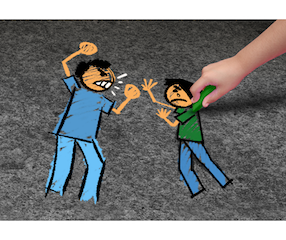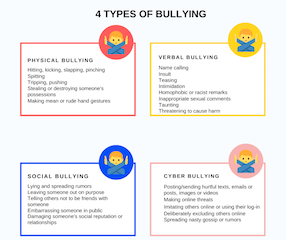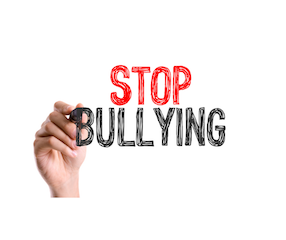
“Darkness cannot drive out darkness; only light can do that. Hate cannot drive out hate; only love can do that.” – Martin Luther King, Jr
Bullying is unwanted, repeated and aggressive behavior that is intended to hurt another individual, physically, mentally, or emotionally. We commonly associate bullying to school aged children, but it can also take place in the workplace or any other type of social situation like sporting clubs, friendship or family groups. Bullying may cause serious, lasting problems to both parts, the bully and the person being bullied. The behavior is often repeated and habitual.
Bullying is the use of force, coercion, hurtful teasing or threat, in order to abuse, aggressively dominate or intimidate. A required prerequisite is the perception of an imbalance of physical or social power. This imbalance is what distinguish bullying from any other kind of conflict. Bullying is a type of aggressive behavior characterized by three main criteria: imbalance of power, hostile intent, and repetition over a period of time.
“Bullying in schools undermines children’s confidence, their self-esteem, their education, their long-term mental health – and where we fail to stop bullying, we condone violence and we fail to give children the negotiation and conflict resolution skills that are so important for their future.”
Rana Flowers, UNICEF Representative to Viet Nam.
Bullying is often aimed at certain people because of their race, religion, gender or sexual orientation or any other aspect such as appearance or disability.
Take action, spread the word!
Contribute to anti-bullying initiatives in your school or community.



